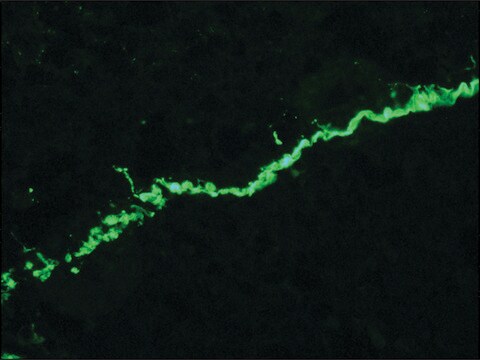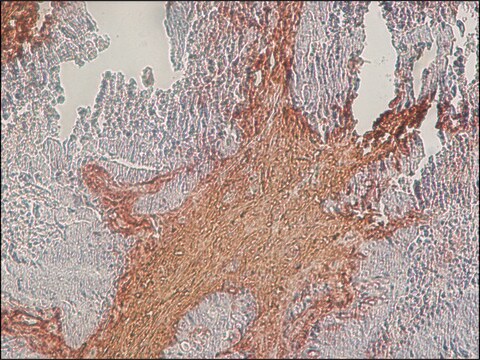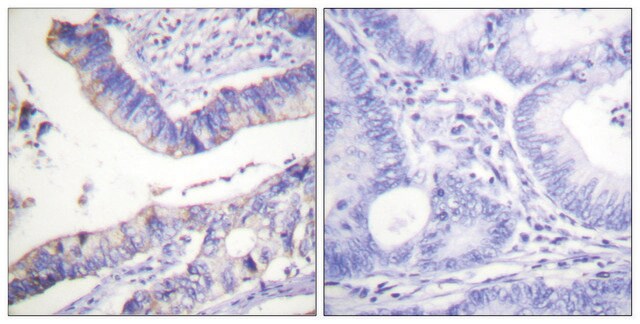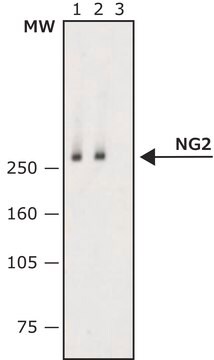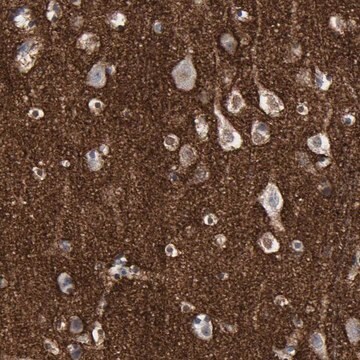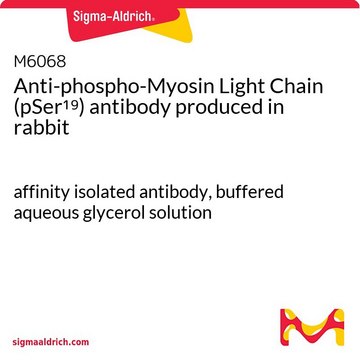推薦產品
生物源
rabbit
品質等級
共軛
unconjugated
抗體表格
affinity isolated antibody
抗體產品種類
primary antibodies
無性繁殖
polyclonal
形狀
buffered aqueous solution
分子量
antigen 45 kDa
物種活性
human
包裝
antibody small pack of 25 μL
技術
microarray: suitable
western blot: 1:200 using a whole extract from a human chronic myelogenous leukemia cell line, K562
UniProt登錄號
運輸包裝
dry ice
儲存溫度
−20°C
目標翻譯後修改
unmodified
基因資訊
human ... GATA1(2623)
尋找類似的產品? 前往 產品比較指南
一般說明
GATA is an important cis-element factor in the haematopoietic lineage belongs to GATA-binding protein family. It was first identified in the analysis of globin gene promoters and enhancers. There are different types of GATA proteins: GATA-1, GATA-2, GATA-3. It is expressed in erythroid, mast, megakaryocytic lineages, multipotential progenitor cells and lines.
GATA-1 (ERYF1, GF-1, NF-1) is a Cys2/Cys2 zinc finger DNA binding protein that is expressed primarily in erythroid, megakaryocytic, mast cells and eosinophilic cells.
免疫原
synthetic peptide corresponding to the C-terminal region of human GATA-1 (amino acids 394-413).
應用
Anti-GATA1 antibody produced in rabbit has been used in gel mobility shift assay and DNase I footprinting. It has also been used in confocal microscopy analysis.
生化/生理作用
GATA is a lineage-restricted transcription factor which plays a pivotal role in erythroid differentiation. It possesses potential binding sites in the regulatory sequences of all erythroid genes. GATA is expressed at higher levels during erythroid maturation. It is essential for terminal differentiation of erythrocytes and megakaryocytes and associated in vivo with the acetyl transferase p300/CBP. Mutation in GATA1 causes thrombocytopenia and abnormal platelet function.
GATA-binding factor 1 (GATA-1) is involved in blocking apoptosis of precursor cells and in controlling the balance between proliferation and cell cycle arrest.
外觀
Solution in 0.01 M phosphate buffered saline, pH 7.4, containing 1% bovine serum albumin and 15 mM sodium azide.
免責聲明
Unless otherwise stated in our catalog or other company documentation accompanying the product(s), our products are intended for research use only and are not to be used for any other purpose, which includes but is not limited to, unauthorized commercial uses, in vitro diagnostic uses, ex vivo or in vivo therapeutic uses or any type of consumption or application to humans or animals.
未找到適合的產品?
試用我們的產品選擇工具.
儲存類別代碼
10 - Combustible liquids
水污染物質分類(WGK)
WGK 2
閃點(°F)
Not applicable
閃點(°C)
Not applicable
個人防護裝備
Eyeshields, Gloves, multi-purpose combination respirator cartridge (US)
CREB-binding protein cooperates with transcription factor GATA-1 and is required for erythroid differentiation
Blobel GA, et al.
Proceedings of the National Academy of Sciences of the USA, 95(5), 2061-2066 (1998)
Chromatin structure at the flanking regions of the human beta-globin locus control region DNase I hypersensitive site-2: proposed nucleosome positioning by DNA-binding proteins including GATA-1
Davies N, et al.
Biochimica et Biophysica Acta (BBA)-Gene Structure and Expression, 1679(3), 201-213 (2004)
Neil Davies et al.
Biochimica et biophysica acta, 1679(3), 201-213 (2004-09-11)
The human beta-globin locus control region DNase I hypersensitive site-2 (LCR HS-2) is erythroid-specific and is located 10.9 kb upstream of the epsilon-globin gene. Most studies have only examined the core region of HS-2. However, previous studies in this laboratory
Expression of an erythroid transcription factor in megakaryocytic and mast cell lineages
Martin Dik, et al.
Nature, 344(6265), 444-444 (1990)
GATA-binding transcription factors in hematopoietic cells.
S H Orkin
Blood, 80(3), 575-581 (1992-08-01)
我們的科學家團隊在所有研究領域都有豐富的經驗,包括生命科學、材料科學、化學合成、色譜、分析等.
聯絡技術服務